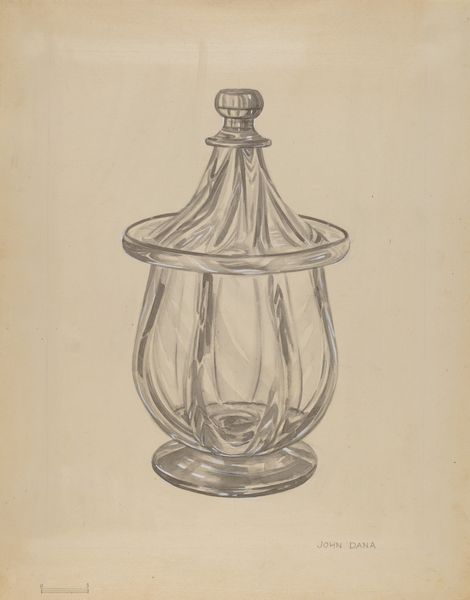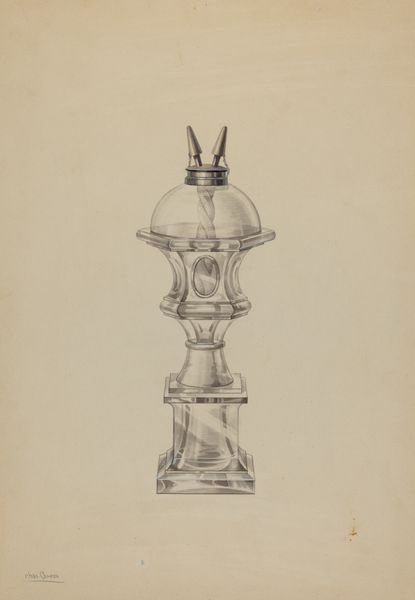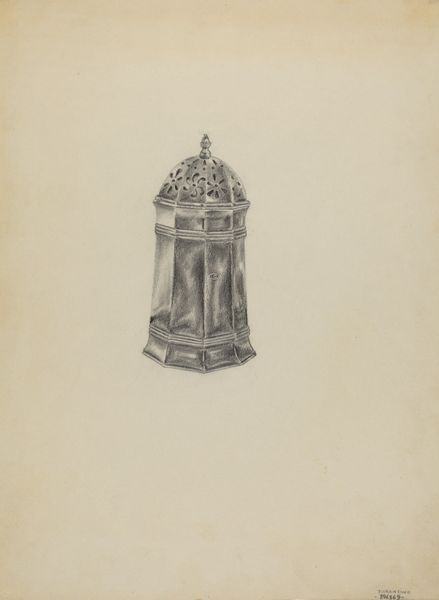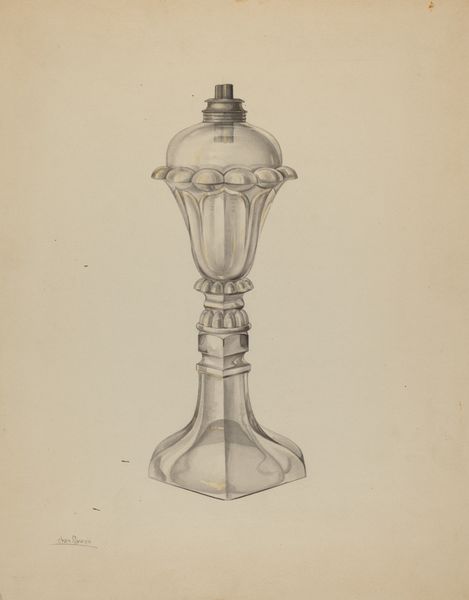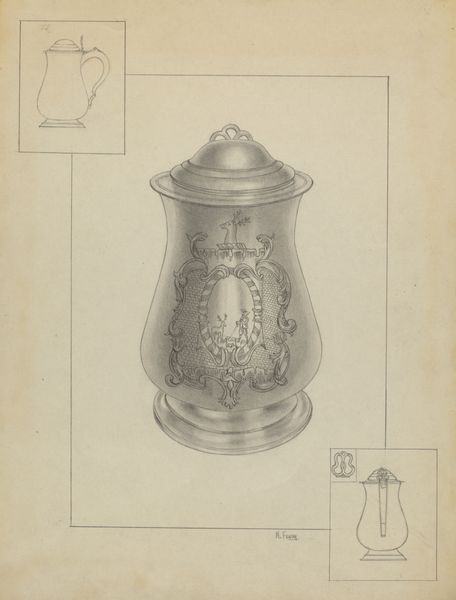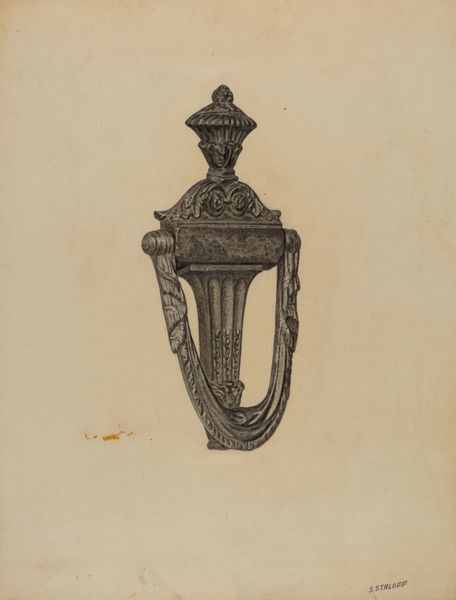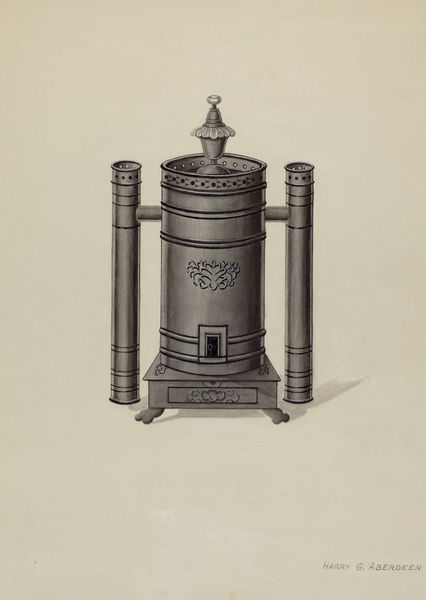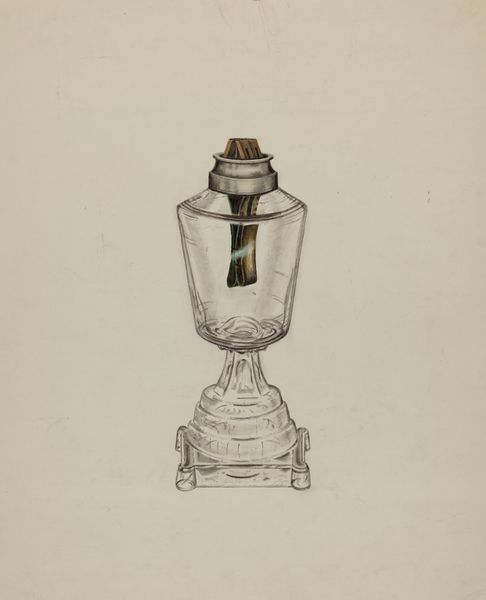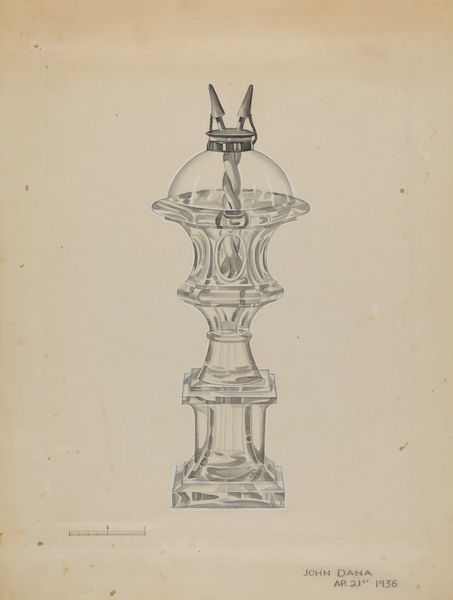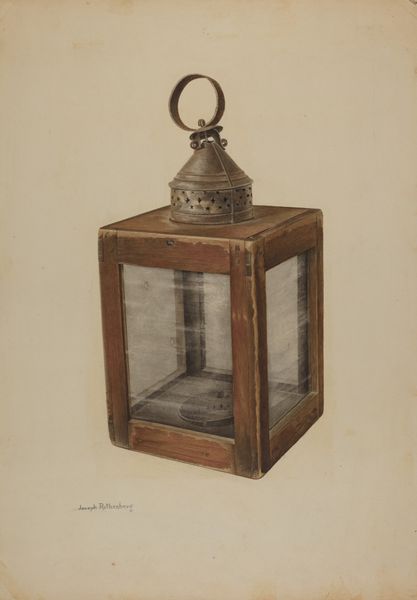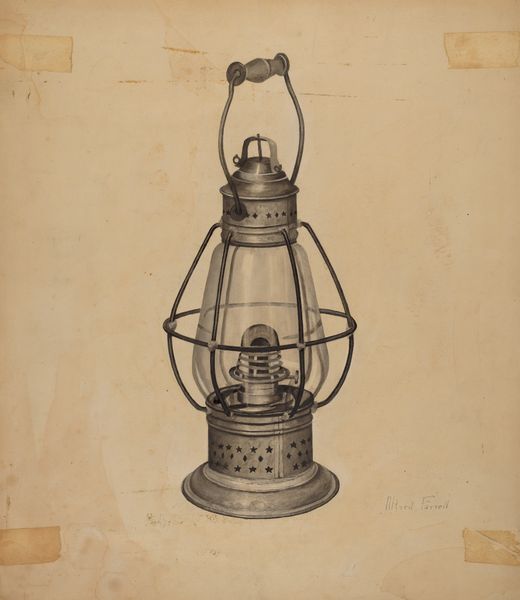
drawing, paper, pencil
#
pencil drawn
#
drawing
#
aged paper
#
toned paper
#
light pencil work
#
pencil sketch
#
old engraving style
#
paper
#
personal sketchbook
#
pencil drawing
#
pencil
#
sketchbook drawing
#
pencil work
Dimensions: overall: 28 x 22.9 cm (11 x 9 in.)
Copyright: National Gallery of Art: CC0 1.0
Curator: We're looking at a drawing titled "Hall Candle Lantern," created around 1936, seemingly a pencil sketch on paper. It presents a detailed rendering of a candle lantern, exhibiting an almost architectural quality. Editor: Immediately, I notice the aged paper—the toned surface gives it a delicate, almost ghostly aura. It feels both fragile and enduring. Curator: The material process is key here. We see a direct record of the artist’s hand and eye, how they translated three-dimensional form onto a two-dimensional surface with simple tools. It emphasizes the physical labor inherent in draftsmanship. Think about the economics of the period; a handmade sketch allows preliminary designs before investing in more elaborate materials or manufacturing. Editor: I am interested in the symbolism inherent in the image itself, which is undoubtedly domestic. The presence of light—often linked to knowledge and divine presence—here framed in a common household object offers ideas about gender and domesticity. How might the location and purpose of the "Hall Candle Lantern" have influenced feminine experience during this period? Curator: From a production standpoint, the artist's choice to represent this domestic item highlights consumption in a particular context. Who used the lantern, where it was made, who designed it and under what material conditions. Was it luxury or commonplace? A manufactured lantern, mass-produced item, versus a sketch... it suggests an intersection of artistic labor and material culture. Editor: Indeed. Considering the lantern's design, with its vaguely gothic windows and the somewhat subdued floral decoration, one is led to imagine who might choose such a design and in what setting? Was it a conscious act to elevate interior space, in what was surely for many, an unstable world, fraught with inequalities of class and opportunity. Curator: Perhaps. By focusing on the means of production and its relation to societal changes, it challenges a hierarchical boundary that separates "high" art from something considered mundane, or purely functional, "craft." We gain valuable perspectives when we analyze objects in terms of labor, use, and cultural status. Editor: I concur. Through contextual understanding and an awareness of history and social elements, art offers insights into broader struggles and systems of power that affected individuals and society collectively, long ago and even in the present. Curator: Thinking of it through its design and production helps illuminate its specific location and cultural standing. Editor: Precisely! The simple image encourages thoughtful speculation around objects, use and even individual experiences that shaped past times.
Comments
No comments
Be the first to comment and join the conversation on the ultimate creative platform.
